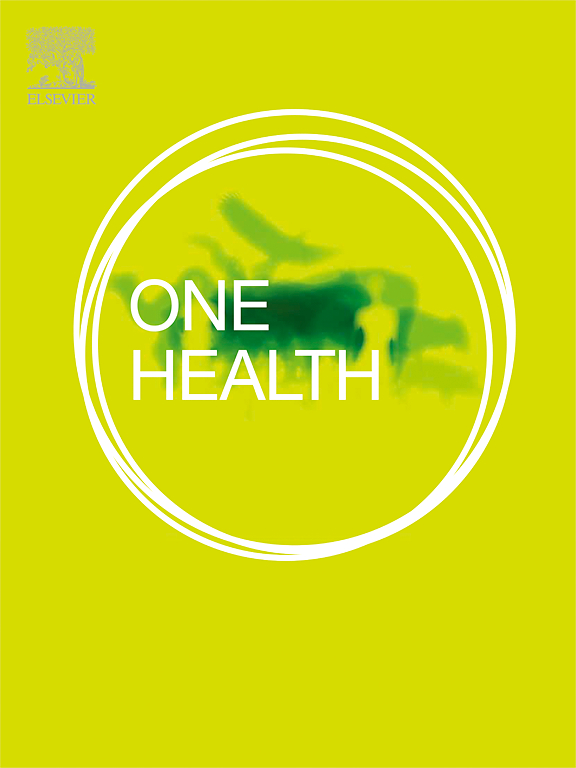同一健康中的经济方法和空间尺度:范围综述的结果
IF 4.5
2区 医学
Q1 INFECTIOUS DISEASES
引用次数: 0
摘要
covid -19和其他人畜共患疾病表明人类、动物和环境卫生之间存在密切联系。这种相互依存关系强调需要采取全面的“同一个健康”方针。然而,同一个健康的概念有时被简化为对抗人畜共患病和抗菌素耐药性,而忽视了空间和环境层面。这种狭隘的关注忽视了“同一个健康”在地理背景下的潜力,它可以在区域生态系统内优化健康。因此,本文旨在概述地理背景和经济方法来衡量一个健康和这些因素对有效的健康结果的重要性。材料和方法对“同一个健康”的经济证据和地理范围进行了全面的检索。在Web of Science、Scopus和PubMed中使用了搜索词“One Health”,加上“区域、景观、面积、地理、成本、经济、效用”。文章由两位盲法审稿人筛选。记录文章的年份、作者、经济方法、干预措施、结果、研究目的、主题和地理区域。结果共检索到1214篇文献,其中108篇纳入分析。主题集中在:人畜共患病(56%)、抗菌素耐药性(14%)、食品安全/保障(7%)、动物福利(6%)和治理(6%)。大多数研究是在非洲国家进行的,大多数研究(57%)采用区域视角,19%采用国家视角,13%采用多国视角。最常见的经济方法是混合方法和CEA,回归分析,以及指数方法。分析的文章主要集中在人畜共患病和目前的测量工具上,这些工具尚未符合《2022-26年同一个卫生联合行动计划》的要求。综合考虑地理因素,可以更全面、更有效地应对“同一个健康”的挑战。确定的测量工具的多样性为制定未来的、对环境敏感的“同一个健康”战略提供了宝贵的基础。本文章由计算机程序翻译,如有差异,请以英文原文为准。
Economic methods and spatial scales in One Health: Results from a scoping review
Introduction
COVID-19 and other zoonoses indicate the close connection between human, animal, and environmental health. This interdependency underscores the need for a comprehensive One Health approach. However, the One Health concept is sometimes reduced to combating zoonoses and antimicrobial resistance, neglecting the spatial and environmental dimensions. This narrow focus overlooks the potential of One Health in geographic contexts, where it can optimize health within regional ecosystems. Therefore, this paper aims to provide an overview of geographic contexts and economic approaches to measuring One Health and the importance of these factors for effective health outcomes.
Material and methods
A comprehensive search for economic evidence and the geographical scope of One Health was conducted. The search terms ‘One Health’, combined with ‘region, landscape, area, geography, cost, economics, utility,’ were used in Web of Science, Scopus, and PubMed. Articles were screened by two blinded reviewers. Year, author, economic method, intervention, outcome, study aim, topic, and geographical area of the articles were recorded.
Results
1214 articles were retrieved and 108 were included in this analysis. The topics focused on: zoonoses (56 %), antimicrobial resistance (14 %), food safety/security (7 %), animal welfare (6 %), and governance (6 %). Most studies were conducted in African countries, the majority of studies (57 %) adopted a regional perspective, while 19 % employed a national and 13 % adopted a multi-country perspective. The most common economic approaches were mixed methods and CEA, regression analysis, as well as index methods.
Discussion
The analyzed articles largely focus on zoonoses and current measurement instruments that do not yet align with the requirements of the One Health Joint Plan of Action 2022–26. Integrating geographical considerations promises a more comprehensive and effective approach to One Health challenges. The diversity of identified measurement instruments provides a valuable foundation for developing future, context-sensitive One Health strategies.
求助全文
通过发布文献求助,成功后即可免费获取论文全文。
去求助
来源期刊

One Health
Medicine-Infectious Diseases
CiteScore
8.10
自引率
4.00%
发文量
95
审稿时长
18 weeks
期刊介绍:
One Health - a Gold Open Access journal.
The mission of One Health is to provide a platform for rapid communication of high quality scientific knowledge on inter- and intra-species pathogen transmission, bringing together leading experts in virology, bacteriology, parasitology, mycology, vectors and vector-borne diseases, tropical health, veterinary sciences, pathology, immunology, food safety, mathematical modelling, epidemiology, public health research and emergency preparedness. As a Gold Open Access journal, a fee is payable on acceptance of the paper. Please see the Guide for Authors for more information.
Submissions to the following categories are welcome:
Virology,
Bacteriology,
Parasitology,
Mycology,
Vectors and vector-borne diseases,
Co-infections and co-morbidities,
Disease spatial surveillance,
Modelling,
Tropical Health,
Discovery,
Ecosystem Health,
Public Health.
 求助内容:
求助内容: 应助结果提醒方式:
应助结果提醒方式:


